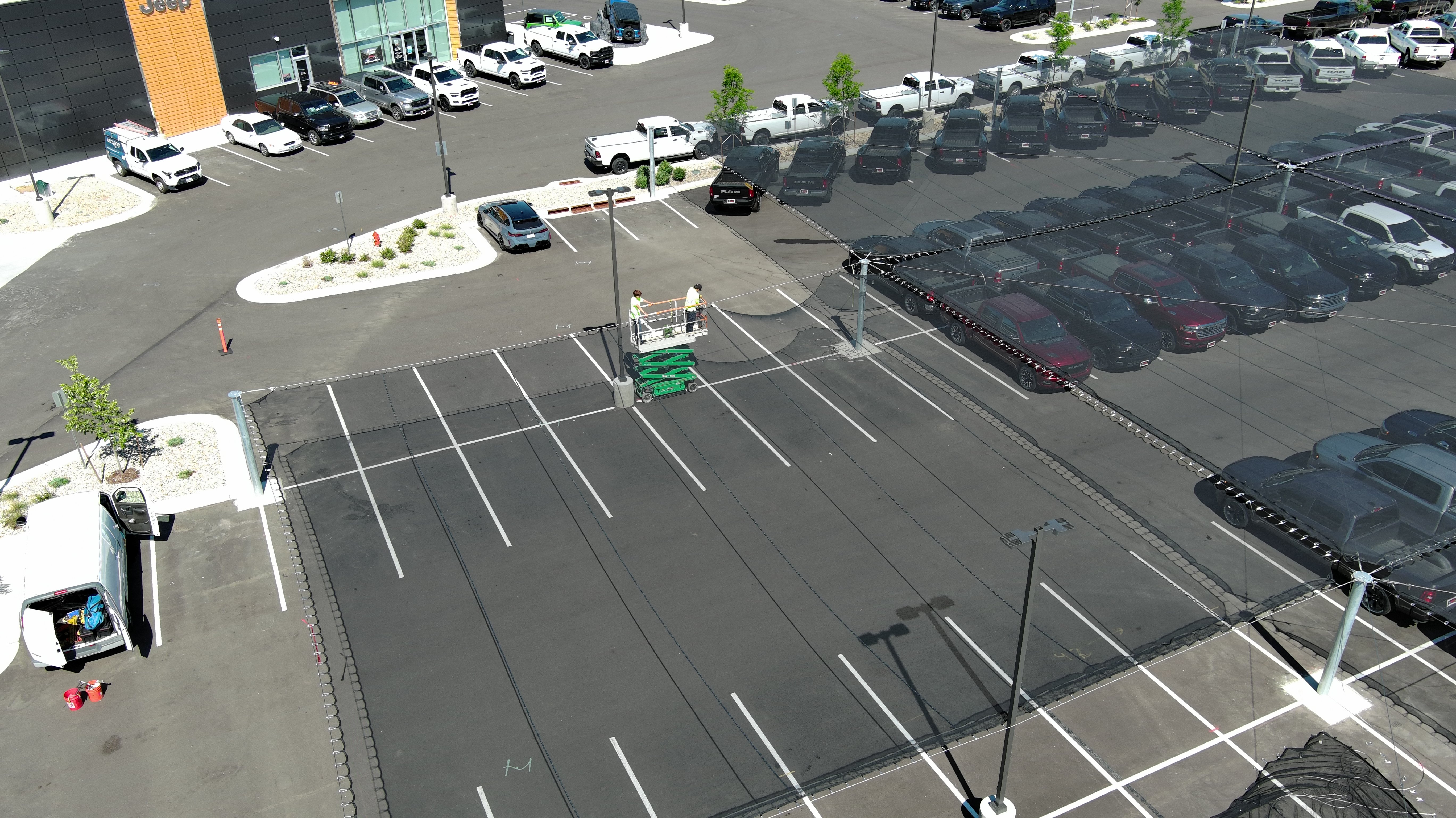Whitepaper: Performance Testing of Hail Protection Systems
Updated
August 18, 2025
•
5
min read

How to Evaluate Durability, Impact Resistance, and Real-World ROI
As hailstorms increase in frequency and severity across the U.S., businesses face mounting risk to vehicles, facilities, and equipment. Hail protection systems—especially tensioned hail netting—have emerged as an effective way to prevent damage, reduce insurance claims, and improve operational continuity. But not all hail protection is created equal. This whitepaper explores how performance testing validates the reliability and resilience of hail netting systems, and what facility managers and insurers should look for in a solution.
The Growing Threat of Hail Damage
According to the Insurance Information Institute, hail causes billions in property and auto damage each year. Key regions like Texas, Colorado, Nebraska, and Oklahoma—collectively known as "Hail Alley"—see hundreds of hail events annually, with individual storms costing up to $2 billion in insured losses. Source: Insurance Information Institute
Common commercial losses include:
- Crushed vehicle panels and windshields
- Dented HVAC units and rooftop damage
- Damaged solar panels or inventory
- Increased insurance deductibles and dropped coverage
Businesses need proactive, durable protection—and they need assurance that it works.
What Is a Hail Protection System?
Hail protection systems are engineered to shield people, vehicles, and property from hail impact. The most common types include:
- Rigid canopies or steel structures
- Retractable covers or pop-up shelters
- High-tensile hail netting systems
This paper focuses on hail netting, which balances structural resilience, airflow, and cost-effectiveness. These systems are suspended over open-air spaces using tensioned cables and weather-resistant netting material.
Learn More >> Comparing Hail Netting to Other Hail Protection Systems: Which Solution Is Right for Your Business?
Testing Parameters: How Is Performance Measured?
A truly effective hail protection system should undergo multi-phase testing to evaluate:
🧪 Impact Resistance
Tests simulate falling hailstones of varying sizes (typically 1"–3") at terminal velocity, measuring:
- Breakthrough force
- Net deflection
- Material integrity after impact
💨 Wind Load Tolerance
Systems are rated to withstand sustained wind speeds of 90–120 mph, with minimal sway or distortion.
❄️ Snow Load Capacity
Netting must remain structurally sound under heavy snowfall, often exceeding 30 lbs per sq ft.
☀️ UV and Fire Resistance
Outdoor systems should pass UV aging tests and meet standards like NFPA 701 fire retardancy.
🔄 Fatigue Testing
Materials should endure multiple impact cycles without degrading tensile strength or net elasticity.
Case Study: Hail No® Performance Benchmarks
At Hail No, our netting system is built from a proprietary blend of 1000D and 150D Dacron polyester, designed to absorb energy from falling hail while maintaining structural tension.
Lab-Tested Results:
- Impact resistance: Deflects hail up to 2.5" without penetration
- Wind tolerance: Engineered to withstand up to 120 mph
- Snow load: Rated for 30+ psf sustained load
- Break strength: Warp 180 lbs / Fill 82 lbs
- Net lifespan: 10+ years with minimal maintenance
- Fire rating: NFPA 701 compliant
- UV Resistance: Multi-season durability with no color fading or fiber breakdown
Testing performed using industry-standard drop simulators and tension chambers. Third-party Flammability Test Report performed by Diversified Testing Laboratories, Inc. Lab Identification No. 2509.
Related Article >> How Our Hail Netting Is Engineered for Maximum Durability
Comparing Hail Netting vs. Rigid Structures
Insurance and ROI Implications
Businesses that implement high-performance hail protection often experience:
- Up to 40% reductions in insurance premiums
- Zero-loss claims records in storm seasons
- Rapid payback periods (1–2 years)
- Improved eligibility with top-tier insurers
Insurers increasingly view tested protection systems as credible risk mitigation tools—especially when supported by engineering data and real-world case studies.
Calculate Your ROI with the Hail Netting ROI Calculator
Verified Performance = Confident Protection
Choosing the right hail protection system isn’t just about cost—it’s about evidence-backed performance. With rigorous testing and engineering, hail netting systems offer a proven, scalable way to defend against hail damage and protect your bottom line.
Want to see test results or schedule a site-specific assessment?
Contact Hail No today for a free consultation and quote.